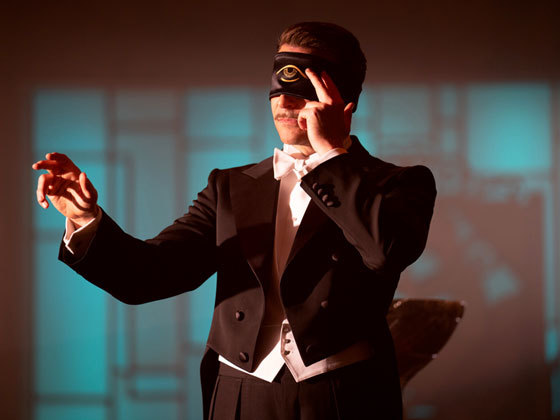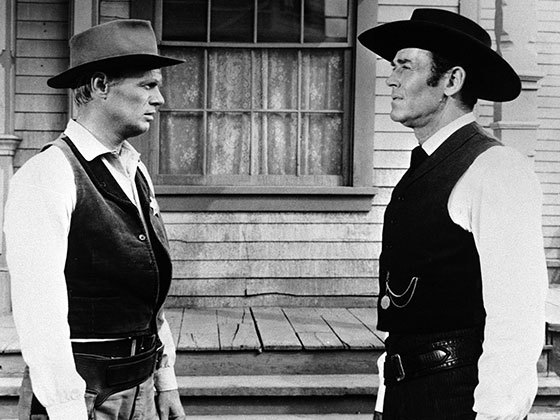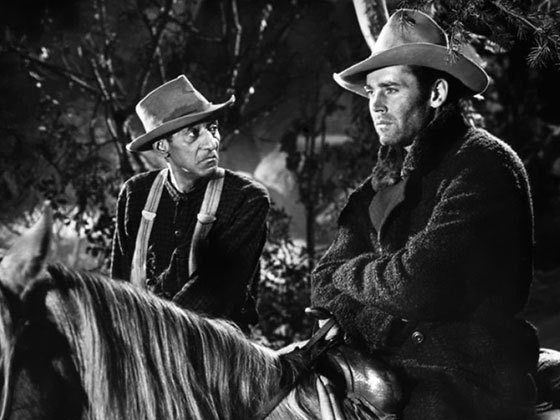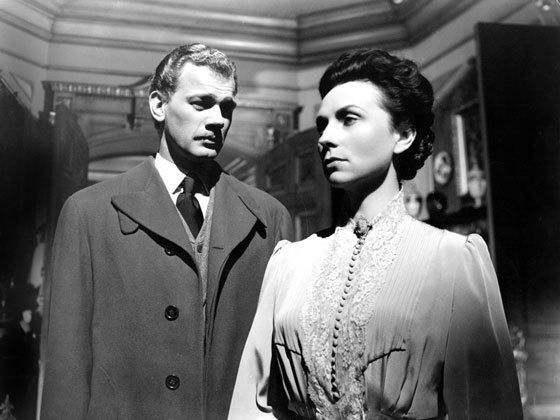By Amor Towles
Though it reflects Hollywood’s preference for tidy resolutions and happier endings, George Cukor’s adaptation of the Broadway hit by George S. Kaufman and Edna Ferber stays true to the social satire and psychological nuance of the original.
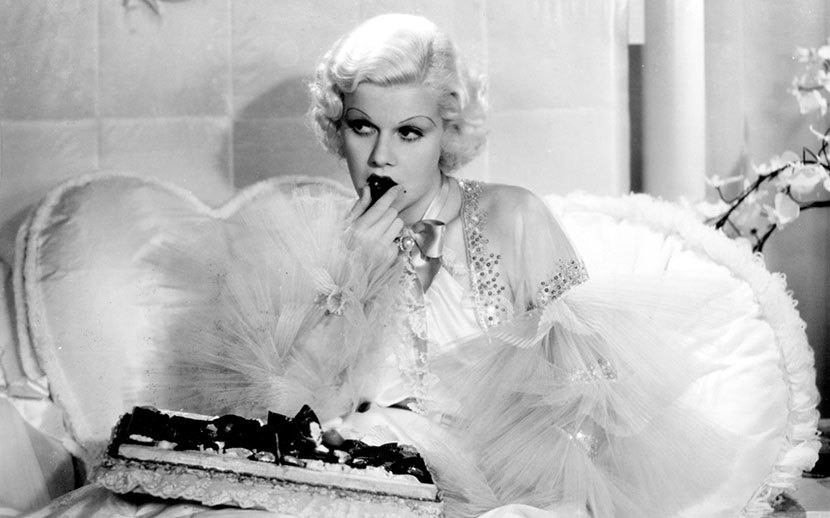
Living in a time when Hollywood movies are finding a second life as Broadway musicals, it’s easy to forget that in the golden age of cinema the normal journey was from stage to screen. Many of the most beloved films of the era, like The Philadelphia Story, His Girl Friday, and You Can’t Take It With You, were popular as plays first. So well-oiled were the wheels that carried successful plays from Broadway to Hollywood in the 1930s, when George Kaufman and Edna Ferber’s Dinner at Eight premiered to acclaim at the Music Box Theater on October 22nd, 1932, it took just ten months for it to reach the silver screen with an all-star cast including John and Lionel Barrymore, Jean Harlow, Marie Dressler, and Wallace Beery.
The movie version of Dinner at Eight, produced by David O. Selznick for MGM and directed by George Cukor from a screenplay by Frances Marion and Herman J. Mankiewicz, was applauded by critics, popular at the box office, and went on to become a classic of American film. Reviewing for The New York Times in September 1933, Mordaunt Hall wrote “the picture is one of the outstanding screen contributions and an excellent entertainment for all.” In December 1933, the Times ranked the film as one of the ten best pictures of the year and in 2000 the American Film Institute named the movie one of the top 100 comedies in the history of American cinema. Despite the passage of more than eighty years, a host of changes in American society, and the inevitable evolution of popular taste, the movie remains both charming and provocative.
| READ THE PLAY |
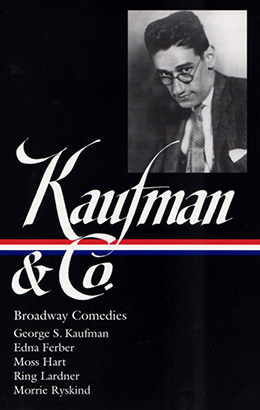 |
| in Kaufman & Co.: Broadway Comedies |
Significant credit for Dinner at Eight’s acclaim should go to Kaufman and Ferber because the movie is less a reinvention of the play than a faithful transcription of it. Naturally enough, Cukor and his screenwriters were loyal to the Kaufman/Ferber dialogue (with a few important exceptions discussed below). But Cukor, who had been a Broadway director in the 1920s, was almost as loyal to the visual experience of the play. Closely following the play’s sequence of scenes, the movie has no exterior shots, recreates six of the play’s seven interiors (generally with the three-walled format of theater), and relies heavily on straight-on takes of conversations interspersed with close-ups. This is one reason, no doubt, that Cukor was able to complete the shooting of Dinner at Eight in an extraordinary twenty-seven days.
But the movie’s abiding popularity also stems from Cukor’s shrewd direction and the nuanced performances of his cast. Although Dinner at Eight is ranked as a classic “comedy,” it has far less in common with the post-vaudevillian slapstick of Animal Crackers (which Kaufman wrote for the Marx Brothers in 1928) than with the acerbic psychological portrayals of All About Eve (which Joseph Mankiewicz would write and direct for the screen in 1950). For while the film initially showcases the quick repartee and exaggerated facial expressions of the era’s comedies, it quickly becomes a complex social satire which concerns itself with an array of human frailties—and which remains strikingly of the moment.
The opening gambit of Dinner at Eight is deceptively straightforward. In a well-appointed Manhattan sitting room Millicent Jordan, the wife of a shipping magnate (played by Billie Burke of Glinda the Good fame), receives word that Lord and Lady Ferncliffe, the richest couple in England, have accepted her invitation to dinner. Transparently frivolous, Mrs. Jordan sees the Ferncliffes’ acceptance as a coup likely to land her in the society columns. In quick succession she chooses the optimal guests to round out her table: a renowned stage actress, a Hollywood star, a multi-millionaire and his wife, a handsome society physician and his wife. The chauffeur is dispatched for flowers, outfits are discussed, and phone calls are made setting in motion this glamorous dinner-to-be. Given the opening, it’s easy to forget that this was the third year of the Depression; but not for long. What follows is a cutting examination of the intrinsic fluidity of wealth, fame, and social position in the modern American metropolis.
In the ensuing scenes, we learn that the multi-millionaire and his wife—Dan and Kitty Packard (Wallace Beery and Jean Harlow)—are actually a former Montana miner and a coat check girl from the Hottentot Club, who have plenty of wealth but few social refinements. The two famous performers—Larry Renault (John Barrymore) and Carlota Vance (Marie Dressler)—both have excellent diction and aristocratic style, but Renault confesses he rose from the lower ranks of vaudeville with its “rooming houses, dirty kimonos, fried-egg sandwiches,” while Vance admits in an aside that she’s “done really well for a little girl from Quincy, Illinois.” The handsome mustachioed society physician, Dr. Talbot (Edmund Lowe), was raised in the vicinity of Hell’s Kitchen and has made his way to the Upper East Side by means of his looks, his bedside manner, and a good marriage. In other words, the majority of the Jordans’ guests have clawed their way from humble backgrounds to get to this dinner table. In stark contrast to these newly arrived members of “society” are the Ferncliffes who, we presume, have had their wealth and social station for generations, if not centuries.
By definition, however, a world in which social standing, wealth, and fame are fluid is one in which they are tenuous. As we progress through the film’s “first act,” a number of those who will be attending the dinner are revealed to be grappling with the threat of irreversible decline. Alcoholic and temperamental, Renault can no longer secure a part and is virtually penniless. Vance, who is also struggling financially, has aged well beyond her reputation for beauty and any feasible chance of a return to the limelight. And our host, Oliver Jordan (Lionel Barrymore), is not only facing financial ruin in the business his grandfather founded, he is apparently at risk of heart failure—despite being in his early forties. Yes, Packard with his millions and his invitation to advise the White House appears safely on top of the heap; but as his own wife observes (almost threateningly), should the world become aware of his unsavory business practices, he too will come tumbling back to earth. Despite the passage of decades, the modern viewer will find little that is quaint or nostalgic about these characters for history has shown them to be archetypes who are perfectly representative of the tenuous success stories that populate our headlines today.
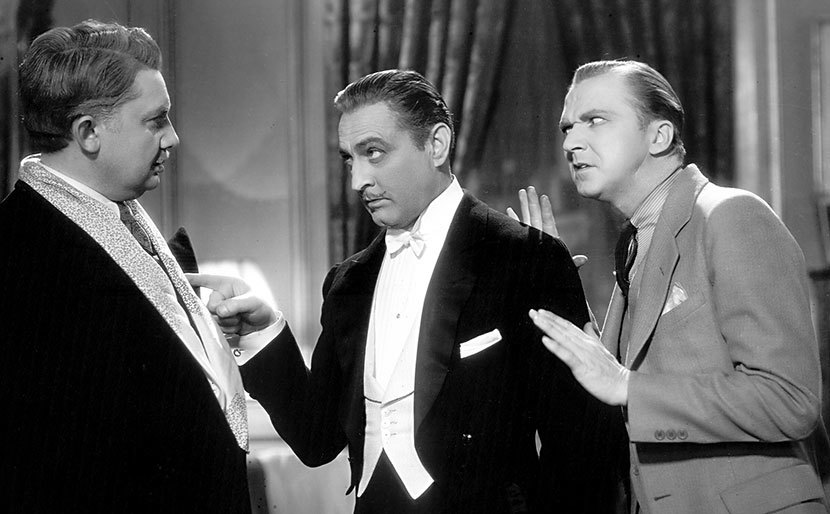
A world of social, reputational, and financial fluidity is also bound to be a world of facades. It is human nature for those in decline to sustain outward appearances for as long as they possibly can. Initially, they do so presuming that they will soon regain their footing and no one will be the wiser. But as pressure mounts, there comes the almost desperate effort to maintain their position through outright dissembling, rather than face the humiliation of public decline. Conversely, it is equally natural for those who have achieved access to society through the accumulation of wealth or fame to adopt the mannerisms of the upper echelons in the hopes of blending in, and then assume whatever poses necessary to protect their newfound status. In Dinner at Eight, such semblances are in ample supply. Artful misdirection, convenient omissions, and outright lies pepper the dialogue. In the first thirty minutes of the movie, I count no less than eight incidents of explicit deceit. Our host, Jordan, hides his declining financial position and weakening health from his wife and daughter, Paula; Paula hides her disinterest in her well-suited fiancé as well as her illicit romance with the aging Renault; Packard hides his admiration of Jordan’s shipping line and sets in motion a covert takeover through straw men; Kitty Packard hides her affair with Dr. Talbot from her husband, just as Dr. Talbot hides it from his wife; and so on.
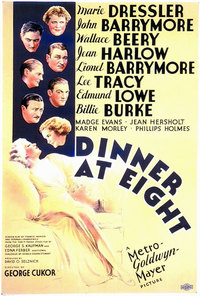
Cukor and his all-star cast clearly appreciated the psychological and thematic nuances of the Kaufman/Ferber play. With wit, energy and glimpses of vulnerability, they seamlessly bring to life the multi-layered reality of Manhattan society while revealing the delicate balance between aspiration and deception. This is no small feat because the boldest lies in Dinner at Eight are the ones the characters tell themselves. The characters have not fashioned their facades simply to dupe society, they have fashioned them to fend off any internal acknowledgment that their circumstances have changed irreversibly. If the first half of Dinner at Eight is a delightful social satire, the back half evolves into an increasingly poignant drama as a series of heated confrontations—in which pretenses are swept aside—force characters to confront the fact that they are no longer who they have imagined themselves to be. Long-suffering Mrs. Packard calls out her husband for his infidelities and, more importantly, for his lapsed nobility. “You’re two people, really” she says. “One’s magnificent, and the other’s so shoddy.” The easily underestimated Kitty turns the tables on Packard for his financial double-dealing and romantic indifference thereby deflating his sense of self-importance. And the imperious Renault is finally confronted by his beleaguered agent, Max, with the inescapable truth that he is “through.” Cukor signals early that the thin line between self-deceit and self-loathing will be a central theme by means of the mirrors that appear in the hands of multiple characters and on the walls of multiple rooms.
To their credit, Lowe, Barrymore, Beery, and Harlow bring their finest performances to the three scenes of unmasking described above. In these scenes we can feel all of the pathos implicit in the impending downfalls that the characters have writ for themselves. We feel from Lowe the self-loathing of the compulsive lothario who no longer enjoys the fruits of his conquests; from John Barrymore the creeping horror of the doomed man who is running out of options; from Beery the unnerving experience of the self-made man who’s forced to recognize that he’s nowhere near as formidable as he has imagined; and from Harlow the pent-up rage of a beautiful woman who is sick of being relegated to the role of attractive accessory. In contrast to the caricatures so common in the broad comedies of the era, these performances seem to have sprung from the school of Stanislavsky—fully inhabited and personalized by the actors. In the case of Barrymore, the power of his performance was famously informed by the growing struggles with alcohol that threatened his own career. Similarly, Harlow, at the time of Dinner at Eight, was trying to shed the typecasting of “blonde bombshell” in pursuit of more powerful roles.
If Cukor and his team were largely loyal to the Kaufman/Ferber script, they diverged from the text in two significant ways. In both the play and the film, the frequency with which the central characters lie to each other is set in high relief by their utter lack of dissembling before “staff”—a state of affairs which reveals the two worlds of “privilege”: the one defined by wealth and social standing and the other by access to information. For every lead character there is at least one minor character in a servile position including two lady’s maids, two butlers, a chauffeur, a cook, a secretary, a clerk, a nurse, an agent, a waiter, and a bellhop. It is the staff members who answer the phone when a lover calls, administer the boorish particulars of a business setback, and get wrangled into bringing precious possessions to the pawnshop. The staff have no illusions as to their employers’ deceits and personal failings; or as Renault puts it to his young lover, Paula, in the play: “You know less about me than—the waiter who just went out of this room.”
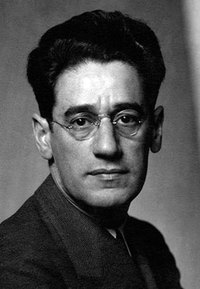
In the play, Kaufman and Ferber elaborate on the differences between the central characters and staff by giving us two scenes downstairs in the Jordan house. There in the pantry we discover an interesting paradox: where the Jordans and their circle dissemble towards each other and lower their facades before staff, the staff maintain cool affects before their employers and lower their facades when with their peers. Unbeknownst to the Jordans (who are consumed with their own problems), the servants are leading overtly passionate lives. Between them we witness avid expressions of desire, jealousy, anger, even a knife fight! In the context of the play this unfettered behavior provides some relief from the nuanced duplicity upstairs while calling into question the merits of social niceties. The playwrights slyly punctuate their point by having the culminating fight between the staff members result in the destruction of an aspic—the dish that is intended as the glorious centerpiece for the Ferncliffe dinner. I suspect that for Kaufman and Ferber this dubious delicacy of molded gelatin is a metaphor for the more frivolous and artificial aspects of high society—and is completely deserving of its fate on the pantry floor.
Presumably in the interests of narrative economy, Cukor has cut these downstairs scenes and distilled the romantic entanglements, the knife fight, and the destruction of the aspic into a few seconds of relayed information. In so doing, he has downgraded the lives of the servants from an important thematic counterpoint to a comic side note. Although, in Cukor’s defense, one watching the film hardly misses the scenes, suggesting perhaps that they are more complementary than essential to Kaufman and Ferber’s themes.
Cukor’s second divergence is a far more profound one—in that it amounts to a systematic reimagining of the play’s conclusion. By the opening of the play’s final scene, the mechanics of decline are clearly in place for the central characters. Jordan is in the process of having his company stolen out from under him—thus threatening financial ruin for his family; Paula is preparing to break off her engagement; Packard and Kitty are in a standoff with the former threatening divorce and the latter threatening exposure; Dr. Talbot is venturing tentatively to restore his marriage; and Renault, having turned on the gas in his fireplace, is artfully awaiting his end. But in a genius stroke, Kaufman and Ferber drop the curtain at eight o’clock just as the guests are being called to dinner and before any one of these ominous developments comes to its conclusion. Which of the characters will actually end up in ruins and which at the last second will cheat fate? This is left for the audience members to decide during their cab rides home.
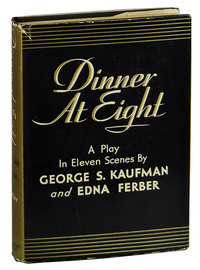
In the final minutes of the movie, however, Cukor has added a few phrases and three quick scenes through which the play’s downward trending uncertainties have been swapped for upbeat resolutions. Rather than hiding the likelihood of his pending financial ruin, Jordan comes clean with his wife; and rather than remaining an unrepentant socialite—selfishly frivolous to the last—Mrs. Jordan reforms on the spot, expressing her love for her husband and her readiness to make any necessary sacrifices. Rather than going offstage with the likely intent of ending her engagement in favor of her doomed romance with Renault, Paula is taken aside by Vance and persuaded to stay the course with her fine young man. And rather than Packard proceeding with his theft of Jordan’s company, Kitty successfully strong-arms him into handing control of the stock back to Jordan. With most of the characters thus having cheated fate, Renault is left to take the fall for the entire cast. He alone follows his misfortune to its inescapable conclusion.
Does Cukor’s decision to pull so many punches at the end of the film diminish it? I don’t think so. We are all quite accustomed to Hollywood’s preference for tidy resolutions and happy outcomes, particularly in its golden age. We understand and expect this pattern, which allows us to measure the merits of the era’s films less for their gritty realism than as forms of entertainment in which society and human nature can be sharply critiqued right up until the finale. A few years ago, when I first met the writer-director and fashion designer Tom Ford, he told me that his moviemaking ambition was to one day make a contemporary version of Dinner at Eight because he loved it so much. As he recently wrote me in an email, “Dinner at Eight is so completely modern. The themes are timeless and still resonate today. It is not simply a Hollywood film with a happy ending but more of a glimpse of a period in a family’s life. The fact that the film deals with an affair of an older man and a much younger woman, her betrayal of her fiancé, the ultimate suicide of her lover, and the impending death of the patriarch of the family and still manages to remain comedic is quite genius. It does what I think that a great film should: it makes us laugh, cry, empathize, dream, and it entertains and then lingers in our psyche.”
Watch: Original 1933 trailer for Dinner at Eight (3:00)
Dinner at Eight (1933). Directed by George Cukor. Screenplay by Frances Marion and Herman J. Mankiewicz, from the play by George S. Kaufman and Edna Ferber. With Marie Dressler, John Barrymore, Lionel Barrymore, Jean Harlow, Wallace Beery, Lee Tracy, Edmund Lowe, Billie Burke, Madge Evans, Jean Hersholt, and Karen Morley.
Buy the Warner Bros. DVD • Buy the TCM DVD • Watch on Amazon Video • Watch on iTunes • Watch on Fandango • Watch on Vudu
Amor Towles is the author of the New York Times best sellers Rules of Civility and A Gentleman in Moscow. He lives with his family in Manhattan and is a member of Library of America’s board.
The Moviegoer showcases leading writers revisiting memorable films to watch or watch again, all inspired by classic works of American literature.

